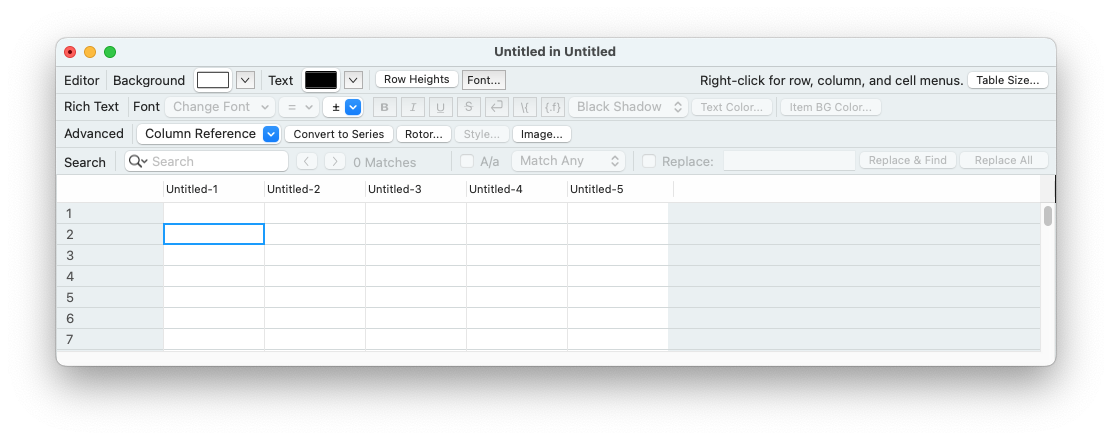Using the Content Editor
The Content Editor (sometimes called just "the CE") is the recommended way to create and edit your card deck's content. It is available for any template that has "Content Editor" as its content source.Tell me more about selecting a content source.

The Content Editor window, for a new document with no content yet.
The content editor opens in its own window (the "CE window), separate from the main document window. This allows you to see the Layout panel of your document at the same time that you are editing content. Each document window has its own CE window. A document's CE window shows the content for the template that is currently selected in the main document window. It is not visible and cannot be opened when the selected template does not have the "Content Editor" source type.
Getting Started
Open the Content Editor by clicking the Content Editor button in the main window's toolbar, or by clicking the Content Editor button in the Layout tab, or by selecting the menu item Window > Content Editor.
Setting Up for Your Design
For a new document, the CE window will show five columns with default names, and 52 card rows each empty of content. You will probably want to change the table size to match your intended design.Change the number of rows and columns by clicking the Table Size button at the upper-right of the CE window. (There are also other ways to add and remove rows and columns, but this is the quickest way to make a big change.)
(Note that fully empty rows will not create cards unless there are filled rows below them. If the entire table is empty, no cards will be created no matter how many rows are in the table.)
Now you should rename the columns to suit your card's design.
Rename a column by double-clicking the column title. Hit Return when you are done editing.
Editing Content
Now you are ready to start entering actual card content. This works the way it does in any spreadsheet app, but here are the details:To completely replace a cell's text, select it and then just start typing. Otherwise, either double-click or select the cell and type Return to begin editing the text (if any) that is already there.
To end editing a cell, press Return, Enter, or Tab.
The key you press to end editing affects the selection as follows:
- If you press Return, the next cell below the edited cell will be selected.
- If you press Tab, the next cell to the right will be selected.
- If you press Enter, the edited cell remains selected.
To cancel editing without changing the cell's text, press ESC.